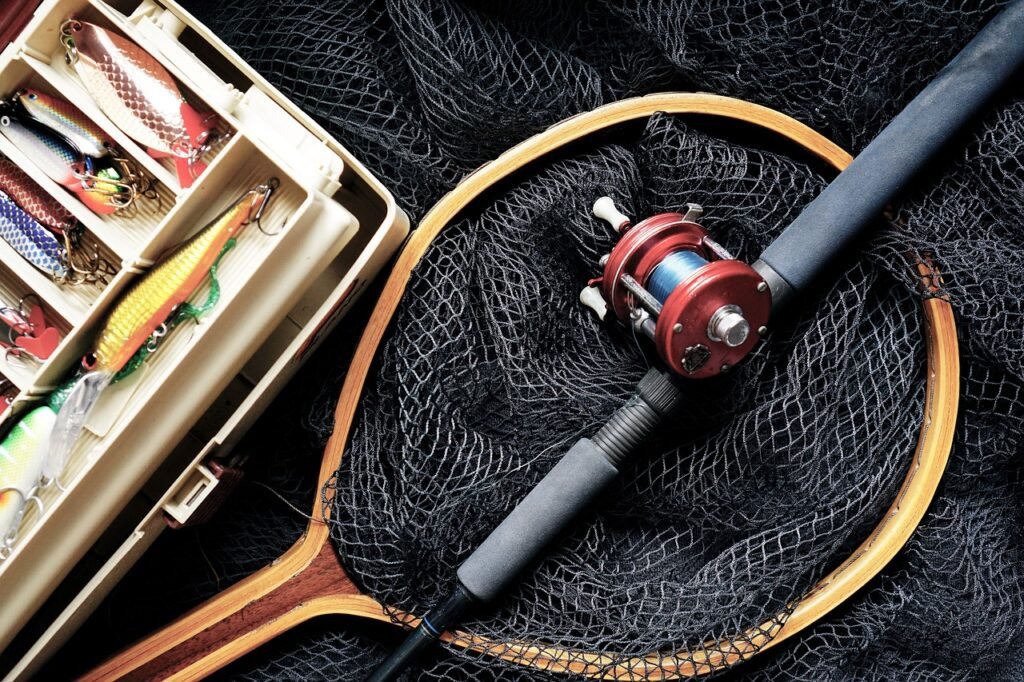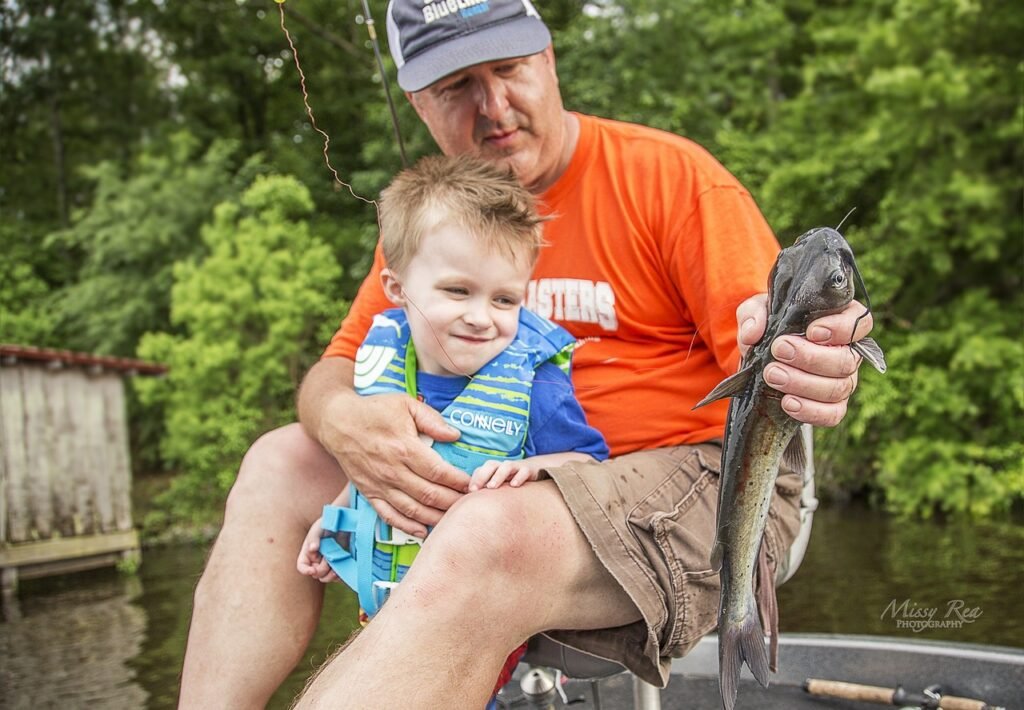Have you ever experienced the calm of the water at dawn, the gentle ripple on the lake surface, and the taut line suddenly springing to life with a prized catch? Ask any fishing aficionado, and they’ll tell you that freshwater fishing is not just an activity, it’s an art. An art that requires more than just intuition and patience; it demands the right gear. That’s where your tackle box comes into play – it’s the treasure chest for any angler.
Today, we’re unraveling the mystery behind creating a personalized freshwater fishing tackle box that will make your angling peers green with envy.
Telling the Story of the Perfect Tackle Box
Imagine yourself strolling beside the serene water, your footsteps syncing with the rhythmic ebb and flow of the waves. In your hand, you carry a tackle box, not just any tackle box, but one that’s meticulously tailored to complement your unique fishing style. It’s a treasure chest filled with an array of equipment, each piece carefully selected for its promise of impressive catches.
However, constructing such a tackle box is far from a generic endeavor; it’s akin to weaving a personal narrative. This process demands a deep understanding of your own needs and preferences, an intimate knowledge of the specific species of fish you’re pursuing, and a thorough familiarity with the particular characteristics of the waters you’ll be exploring. Whether you’re aiming for the tranquil stillness of a lake, the gentle flow of a river, or the vast expanse of the ocean, your tackle box becomes a reflection of your fishing journey, a testament to the thoughtfulness and precision you’ve invested in preparing for the adventure that lies ahead.
Understanding Your Prey and Playground
Freshwater fish exhibit a wide range of diversity in terms of shape, size, and the types of habitats they occupy. For instance, the gear you would choose for catching a Northern Pike, known for its tendency to lurk in weedy waters, would be significantly different from the equipment best suited for a stealthy Bass that prefers to hide behind rocks or submerged structures. This diversity necessitates that anglers carefully consider their target species before deciding on their approach and gear. Understanding the specific behavior and preferences of the fish you’re aiming to catch can significantly improve your chances of a successful outing.
John Doe, an experienced angler who frequents the Minnesota lakes, shares, “My tackle box is biased towards Largemouth Bass. They can’t resist a plastic worm or a top-water lure.”
Key Components for Your Tackle Box:
- Hooks: These come in a range of sizes, starting from the smaller #6 hooks, ideal for catching smaller fish, up to the 3/0 hooks, which are designed to handle your larger targets effectively.
- Sinkers: These are crucial for positioning your bait at the perfect depth in the water, ensuring that it reaches where the fish are most likely to be.
- Floats/Bobbers: Absolutely indispensable, floats, or bobbers, play a crucial role in keeping your bait suspended at a specific depth. They also serve as an alert system, indicating when a fish is biting.
- Swivels: Swivels are a vital accessory in any fishing gear, designed to prevent your line from twisting, which is especially common when using live bait.
- Lures: The assortment includes a variety of lures such as jigs, spinners, spoons, and soft baits to attract fish by mimicking the look and movement of their prey.
- Leaders: Leaders are an essential component when fishing for toothy species, as they can prevent the fish from severing your line with a sharp bite.
Choosing Your Main Line and Leaders
Considering the fish type and their habitat is crucial when selecting your line. Hooking a hefty Catfish? A sturdy mono or braided line might be your best pick.
“I snapped two lines on Pike before switching to a steel leader. It made all the difference,” notes Emily Harris, an avid Lake Champlain fisher.
A Freshwater Fishing Tackle Box with Brains
A skilled angler understands that the most effective tackle box transcends being merely a collection of fishing gear; it represents a carefully curated resource kit, meticulously fine-tuned to adapt to a wide range of fishing scenarios. This includes selecting the right type of bait and lures for different water conditions, having an assortment of hooks for various fish species, and ensuring that every piece of equipment is in top condition to maximize the chances of a successful catch.
Tom Rivera, who has been fishing the streams of the Smoky Mountains for decades, points out, “You’ve got to be prepared for anything. I stock everything from extra line to needle nose pliers.”
The Technical Stuff
Using a spreadsheet or checklist can greatly enhance the organization of your tackle box’s contents. By doing so, you can systematically prioritize items based on how often you use them and the specific type of fishing expedition you’re planning. This approach not only streamlines the process of packing for a trip but also ensures that you’re well-prepared with all the necessary gear tailored to the fishing conditions and species you anticipate encountering.
Here’s a simple table you might use for a basic inventory:
| Item | Description | Quantity |
| Hooks | Sizes #6 to 3/0 | 10-15 ea |
| Sinkers | Different weights | Assorted |
| Swivels | Size 7 to 1 | 10 |
| Lures | Variety pack | 5-10 |
| Floats | Small and Large | 5 ea |
Top of Form
Remember, the lighter the line, the more natural your bait will appear, but there’s a greater risk of breaking. Adjust weights and lines based on your targets.
Personal Touches and Tales
“When I first started fishing, my tackle box was nearly empty. Now, every slot, every compartment, has a story,” says Mia Thompson, reflecting on her growth as an angler.
Customizing your tackle box isn’t just about stocking – it’s about experiences. Include tools like multi-tool pliers, a first-aid kit, and perhaps even a waterproof journal to note down the day’s events.
The Reel Conclusion
Crafting a personalized fishing tackle box is akin to writing your own fishing story, one where you’re the main character geared for success. Through trial and error, advice from the seasoned pros, and the countless hours on the water, your tackle box becomes more than a container – it’s a testament to your angling adventures.
While you look up experts and trough through their reviews for the golden wisdom, never forget that some of the best learning comes from simply casting the line. Keep refining, keep learning, and perhaps your tackle box tales will inspire beginners to start their own stories.
Get out there, the waters are waiting, and so is your perfect freshwater fishing tackle box. Good luck, and tight lines!



